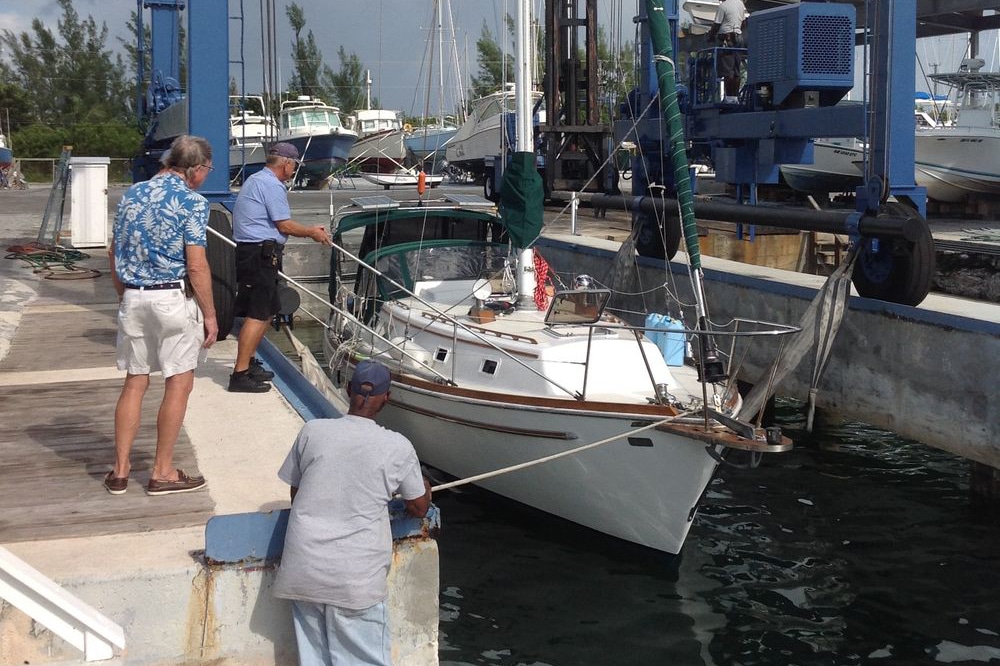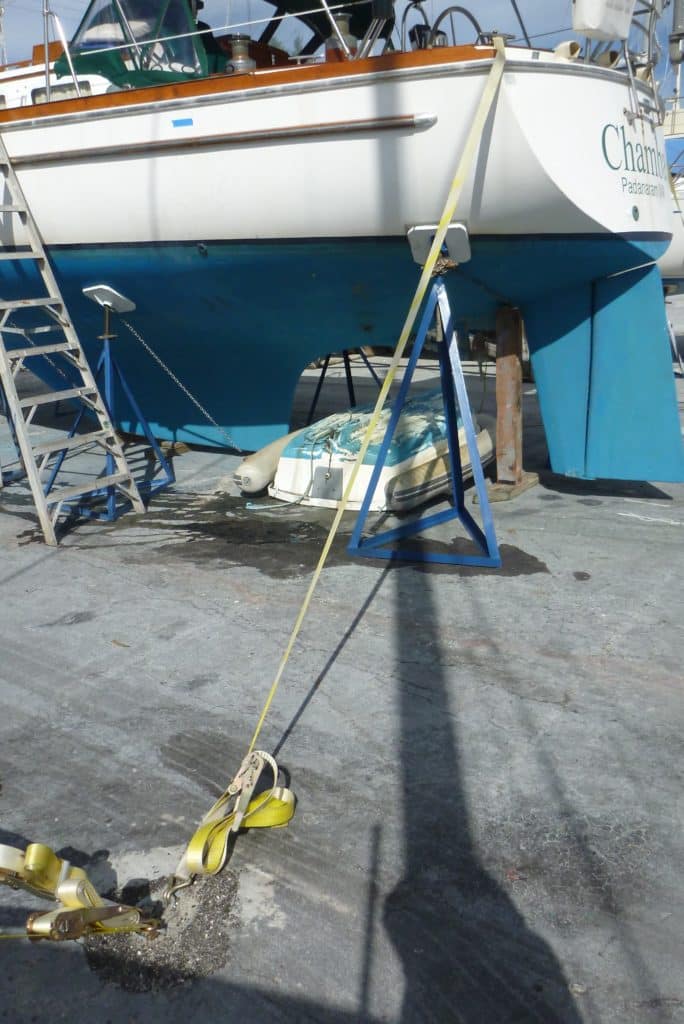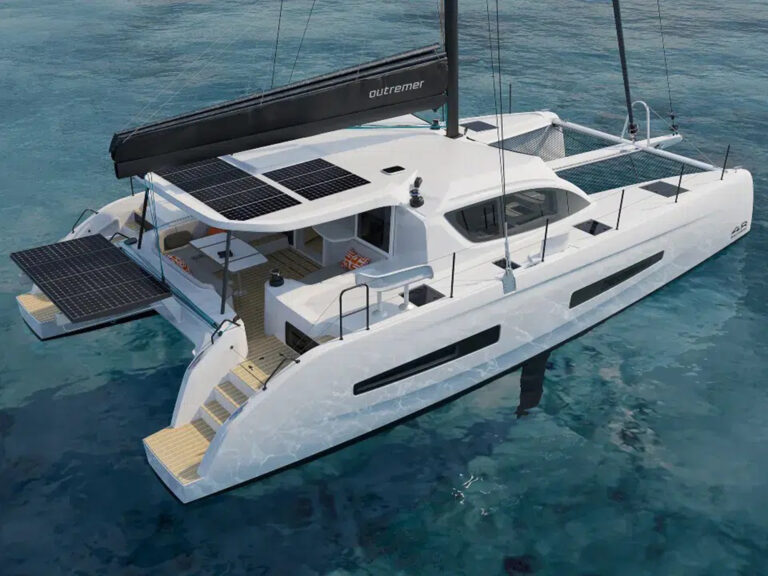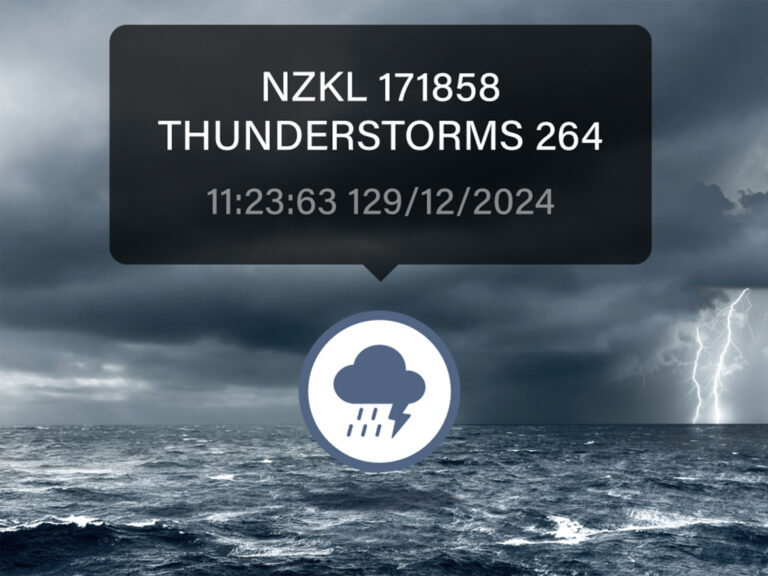
My wife, Barbara, and I had been cruising the Abacos for three months on Chamba, our 1979 Gulfstar 37, and we weren’t ready to leave. There was still much more to see in the rest of the Bahamas, but as the temperatures climbed, we were reminded that it was now mid-June, and we were into hurricane season. The arrival of summer brought with it massive tropical thunderstorms, dramatic sunsets, impressive lightning displays and unpredictable high winds. Since we’d ruled out sailing home to Padanaram, Massachusetts, we needed a storm plan.
Our options included either continuing to cruise, with the aim of getting to a hurricane hole in the event of a tropical storm, or leaving the boat in the water or on the hard while we went home. Continuing to cruise seemed risky — what if the hole was already full when we arrived? We didn’t want to ride out a hurricane on board the boat, so the hurricane hole had to be near shoreside facilities. That reduced our realistic cruising options.
We could leave the boat in the water, anchored or moored in one of the Abacos’ hurricane holes, but that seemed like a bad idea with too many variables: Who would make that last trip to the boat to snug up the lines? Who would move the boat if necessary?
After sorting through these considerations, we decided to put Chamba on the hard for the rest of the hurricane season. Our boat insurance wasn’t an issue. The premium and coverage remained the same whether the boat was in the water or hauled out. We had already taken the big hit when we left to go cruising, with our premiums nearly doubling to include Florida and the Bahamas.
With our decision made, we now needed to find a yard. Quickly. Barbara and I had visited both Marsh Harbour Boatyards (mhby.com) and Abaco Yacht Services (go-abacos.com/ays/ays.html) in our travels. Both are modern, professional yards. At AYS, I had noted that they used tie-downs for their boats — heavy nylon straps that attached to what looked like eye bolts in the ground. This feature was the decider for us.
Hurricane-force winds can shake boats resting on jack stands. Sometimes the jack stands work their way out from under the boat, at which point the boat can fall over. If it’s a crowded marina, the fallen boat can hit its neighbor, and down they go, like a row of dominoes. The tie-down straps reduce the movement and greatly help to hold the boat upright.
The tie-downs were screwed into the ground, and the yard itself was paved with asphalt. We thought this was a good idea, as heavy rainfall would tend to run off rather than soak in and soften the ground, thus giving the tie-downs greater holding power.
AYS had other features going for it as well: We were just a short ferry ride to the airport, and we could live aboard on the hard as we prepared the boat. Within 15 minutes of our arrival at AYS, dockhands helped to maneuver Chamba into the 30-ton Travelift and slowly raised her out of the water. After the jack stands were placed, it was time for the four tie-downs, which attached to the fore and aft cleats. A yard worker took the other end, hooked it onto the padeye on the ground, and ratcheted the straps taut, going diagonally in turn to equalize the tension.
The last thing was to go around the boat and check that each jack stand was at roughly the same pressure against the hull. The yard manager made sure she had emergency contact information and a key to the boat, then away we went. It’s difficult to leave your boat, especially in another country during hurricane season, but we felt confident in our preparations and comfortable with the yard.

Preparing for Hurricane Season
Here are the steps we took to prepare Chamba’s cabin and topsides for hurricane season:
- Interior airflow is key to keeping mold at bay. We lifted all cushions and rested them on their sides, and opened all drawers, lockers and floorboards to get as much air exposure as possible. We also placed packets of desiccant throughout the interior. Upon our return, they were all saturated, but mold and mildew were minimal.
- I shut off the propane at the tank and turned off everything electric except for the bilge pump.
- To reduce windage and protect our gear, we removed the barbecue, radar reflector, sails, bimini and dodger and stowed them below. We lowered the topping lift and firmly tied the boom to the bimini’s frame, with an old life jacket padding the contact point.
- To keep out rain and bugs, we took the cowl vents off the dorade boxes and screwed in the covers, sealed the hawsepipe, and cleaned the gaskets on every hatch and portlight before closing them.
- All running rigging that remained on deck was tightly coiled and securely tied to the mast.








